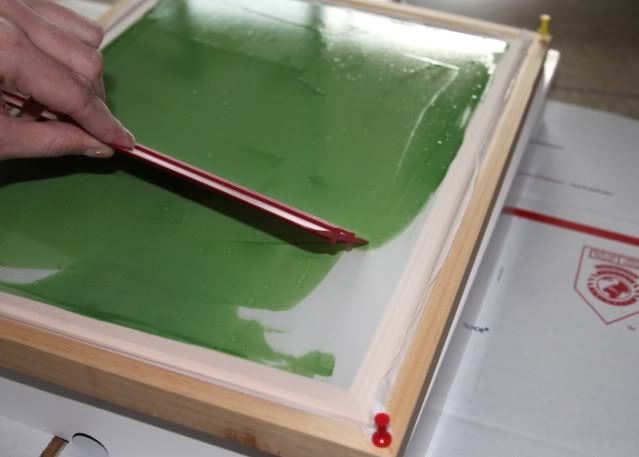

Placing a glass plate over the screen will give much more detailed and precise results.

In this case, you need to remember to remove the glass protector before exposure. A specific screen-printing UV lamp is ideal, but to save money you can also use a 500-W halogen spotlight mounted on a board.
#Large photo emulsion screen printing free#
In an environment free from direct light, place the frame – with the part to be stencilled face up – over a piece of black paper or canvas, and position the lamp about 30 cm away.The image on the screen will be created by the areas which block out light at the moment of exposure, so the design must use a deep black. However, if you want to print a more complex design, you need to use acetate or transparent sheets on which the design has been laser-printed in black. The screen can be exposed simply by positioning on it shapes cut from mat cardboard.Depending on conditions, the screen will take anywhere from one to four hours to dry. Leave the screen to dry in a cool, dark place with the outer side face down.Repeat the process on the other side of the screen. Tip the scoop until the emulsion touches the mesh, then spread it across the surface, moving the scoop upwards.Lean the screen vertically against a wall and, holding it tightly, place the scoop against the mesh, about 2 cm from the edge of the frame.
#Large photo emulsion screen printing full#

The widespread use of screen-printing for creating posters and cover art in underground circles and subcultures is also due to another important factor: the ease with which you can set up a rudimentary screen printing studio from widely available materials. Andy Warhol was instrumental in popularising screen-printing: many of his pieces used this technique, which allowed him to print multiple copies of the same subject while creating a unique print each time by changing the pressure and inks applied. Screen-printing is a well-known technique that uses a mesh screen to transfer ink onto a huge variety of substrates, including paper, wood, fabric and glass, to name but a few.įirst used in the Far East over a thousand years ago, the technique became popular in the Western art world in the 1960s.


 0 kommentar(er)
0 kommentar(er)
